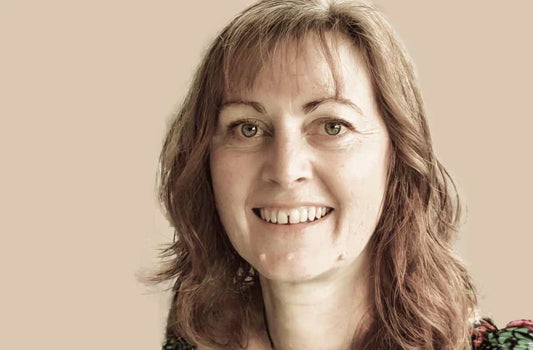What are the three main types of skin cancer you need to be aware of
Claire Crilly, a Check4Cancer Skin Cancer Specialist Nurse, discusses the three main types of skin cancer you need to be aware of and how to spot the signs and symptoms.

Most skin cancers are seen in sun-damaged skin after years of exposure to UV radiation or the ‘burn’ from sunburn and are more common on parts of the skin exposed to the sun. This leads to a failure in the replication and repair mechanism of cells, some of these cells then start to produce abnormal copies and become cancerous.
There are three common types of skin cancer which can all look different and behave in different ways.
- Pre-cancerous skin lesions which are known as ‘Actinic Keratosis’ and ‘Bowens Disease’
- Non-Melanoma skin cancers which are known as ‘Basal Cell Carcinoma (BCC’s)’ and ‘Squamous Cell Carcinomas (SCC’s)
- Malignant Melanoma
We are going to investigate each of these three common types of skin cancer in more detail as being aware of the signs symptoms of skin cancer is crucial in early detection.
1. Pre-cancerous skin lesions | Actinic Keratosis and Bowens Disease
Actinic Keratosis and Bowens Disease are pre-cancerous skin lesions with the potential to develop into cancer and are the result of long-term over-exposure to the sun. About 5% of skin cancers diagnosed are this type and they are normally very slow growing in their development.
What are the signs and symptoms to look out for?
- More than 80% occur on the head, neck, back of the hands and forearms.
- They usually appear on ‘normal’ skin and not from a mole. They present on the skin as small pink, white crusty or scaly lesions that appear on their own or as multiple patches which are normally smaller than 1cm in diameter.
- They can feel rough or cause soreness, irritation, discomfort or pain or they may just pose a cosmetic nuisance.
- They are often, but not always, itchy, and tender lesions which can develop into lumps or ulcerations if left untreated and can potentially become malignant.
What is Bowen’s disease?
- Bowen's disease may occur at any age in adults but is rarely seen before the age of 30 years.
- It is more common in people aged 60+ and occurs predominantly in women (70–85% of cases) and in immunocompromised patients.
- Around 60–85% of patients have lesions appearing on their lower legs and scalp, usually in previously or presently sun-exposed areas of skin.
This image shows a typical ‘Bowen’s disease skin lesion

The images below show examples of Actinic Keratosis skin lesions

How can these skin lesions be treated?
These types of lesions are normally treated by freezing, cauterisation, diathermy and topically. Coagulation is often an effective treatment as well.
2. Non-melanoma skin cancers | Basal Cell Carcinomas and Squamous Cell Carcinomas
Basal Cell Carcinoma (BCCs)
About 80% of skin cancers diagnosed are this type, and over 100,000 cases of Basal Cell Carcinoma are diagnosed in the UK each year. This makes it the most common type of cancer in the UK. This type of cancer is often misdiagnosed or not identified by patients as they do not look like a mole, but often show on the skin as a non-healing sore/lesion, which is slow growing, so does not often cause alarm to the patient. There is a minimal chance that BCCs will metastasise (cancer spreading from one part of the body to another); however, the longer BCCs are left, the greater the chance of a larger scar when removed.
BCCs are most commonly found on the face, scalp, shoulders and back - areas most likely to be exposed to the sun!
What are the signs and symptoms to look out for?
BCCs can come in all shapes and sizes; however, common characteristics of BCCs are:
- They are slow-growing and present on the skin as a non-healing lesion, resembling a spot or sore blister, which can bleed when in the shower.
- Pearly, shiny lumps, skin ulcers, scab-like lesions or even a patch of dry skin or eczema.
- The main thing to look out for is something on the skin that will not heal.
- It may start as a small lump that slowly gets bigger over months and years.
- BCCs do not usually hurt, but they can be itchy and may bleed if scratched.
- Fortunately, BCCs are often superficial and are easily treated with cream or excision; however, the longer they are left, the bigger the scar.
- BCCs are not a genetic condition and are predominantly caused by sun exposure.
The critical thing to remember about BCCs is that they are non-healing lesions, as they tend to grow so slowly that people become accustomed to them on their skin and live with them for many years. If you notice a skin lesion that never seems to improve, visit your GP or book a Skin Cancer Diagnosis appointment with Check4Cancer for a check-up. BBCs have what we call an iceberg effect, so what you see on the surface of your skin is only the tip of the iceberg. The earlier it is detected and dealt with, the better the outcome.
Below are some examples of typical BCCs
 How can BCCs be treated?
How can BCCs be treated?
Most BCCs can be easily treated by a variety of methods, which include:
- Surgical excision.
- Some may be treated by being cauterised and hyfected.
- The use of topical creams.
- MOHS surgery (a precise surgical technique) for facial lesions.
Squamous Cell Carcinomas (SCCs)
Around 20% of skin cancers diagnosed are SCC, and they tend to be faster in their development, appearing in a matter of weeks or months. They usually occur on areas of skin exposed to the sun, such as the face, ears, lips, mouth or hands and are also common in immunocompromised patients as well.
What are the signs and symptoms to look out for?
The appearance of SCCs varies but is usually present as:
- A scaly lump, nodule, ulcer or non-healing sore.
- They often start as small, hard, white or skin-coloured lumps in the skin that grow at a variable rate.
- They are often, but not always, tender, can bleed easily and develop into an ulcer.
- Can appear scabby and are often dome-like in their appearance.
SCC’s have the ability to act like any other cancer and can metastasize (spread to another part of the body), however early detection and removal can stop this process.
Below are some examples of typical SCCs
 3. Malignant Melanoma
3. Malignant Melanoma
The least common, but most concerning type of skin cancer is melanoma. This is a malignant mole which might arise in a pre-existing mole or as a new lesion. Around 5% of cancers diagnosed are this type, and it accounts for 80% of skin cancer deaths. These are the easiest to recognise as they have an irregular shape and outline, variations in colours and are often asymmetrical. Malignant Melanoma most commonly presents as a new mole, but can also arise from a pre-existing mole that changes.
As a general rule, the more moles and freckles you have, the higher your risk of melanoma. In addition, if you have a family history of melanoma and have had a large amount of sun exposure, then this also increases your risk.
What are the signs and symptoms to look out for?
You may have some moles or dark patches on your skin that are flat or slightly raised. Usually, these will remain harmless for your whole life. However, moles that change in size, shape or colour over weeks or months in adult life should be further investigated.
There are some clear signs that a mole could be a melanoma, and you should get your moles checked by your GP or a skin cancer specialist if you notice any of the following skin changes:
- Changing shape, particularly if it has an irregular border.
- Changing colour, getting darker, becoming patchy or multi-shaded.
- An existing mole is getting bigger or a new mole is growing quickly.
- If a mole starts to itch or become painful.
- If a mole is bleeding, becoming crusty and/or looks inflamed.
- ‘Mole with no friends’ – moles are like a family (we all make our own type of mole pattern), so the mole that stands out or is ‘different' from your other moles is what you should be aware of.
We recommend checking your skin monthly to establish a baseline for your ‘normal’. If you notice any moles or lesions after self-examination, contact your GP or Check4Cancer immediately. We have a handy guide for checking your skin here.
Below are some examples of malignant melanomas

If you are concerned about any moles or lesions, then consult your GP or Check4Cancer immediately to get them checked out.
To find out more about our skin cancer screening service, please click here. To view our nationwide network of skin cancer screening clinics, click here.
Knowledge and support
Go to all articles
12 Ways to Reduce Your Cancer Risk
Research shows that more than 40% of cancer cases in the UK are linked to lifestyle and environmental factors...
Read more
Karen's Story
When 54-year-old Karen Smout received an email offering her a Check4Cancer screening service, it was just the nudge she needed...
Read more
What is HPV and What are the Symptoms?
Understanding HPV, how it spreads, its symptoms, and how to protect yourself is crucial for maintaining your health.
Read more